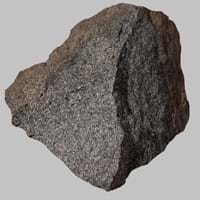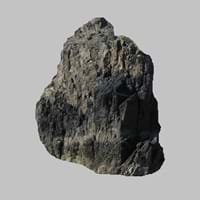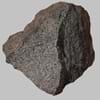Definition
Gabbro is an intrusive igneous rock which is chemically equivalent to plutonic Basalt
Metapelite is an old and currently not widely used field geological term for a clay rich fine-grained clastic sediment or sedimentary rock, i.e. mud or a mudstone
Discoverer
Christian Leopold von Buch
Unknown
Etymology
From Latin glaber bare, smooth, bald
From Pelos or clay in Greek
Class
Igneous Rocks
Metamorphic Rocks
Sub-Class
Durable Rock, Hard Rock
Durable Rock, Medium Hardness Rock
Group
Plutonic
Not Applicable
Other Categories
Coarse Grained Rock, Opaque Rock
Coarse Grained Rock, Fine Grained Rock, Medium Grained Rock, Opaque Rock
Texture
Phaneritic
Foliated
Color
Dark Grey to Black
Dark Greenish - Grey, Green, Light Green, Light Greenish Grey
Durability
Durable
Durable
Scratch Resistant
Yes
Yes
Appearance
Veined and Shiny
Banded
Interior Uses
Countertops, Decorative Aggregates, Homes, Interior Decoration
Decorative Aggregates, Interior Decoration
Exterior Uses
As Building Stone, As Facing Stone, Garden Decoration, Office Buildings, Paving Stone
As Building Stone, As Facing Stone
Other Architectural Uses
Curbing
Curbing
Construction Industry
As Dimension Stone, Building houses or walls, Cement Manufacture, Construction Aggregate, for Road Aggregate
Cement Manufacture, Construction Aggregate, for Road Aggregate
Medical Industry
Not Yet Used
Not Yet Used
Antiquity Uses
Artifacts, Monuments, Sculpture
Artifacts
Commercial Uses
Cemetery Markers, Commemorative Tablets, Laboratory bench tops, Jewelry, Sea Defence, Tombstones
Commemorative Tablets, Creating Artwork
Types
Not Available
Not Available
Features
Smooth to touch
Easily splits into thin plates, It is One of the Oldest, Strongest and Hardest Rock
Archaeological Significance
Monuments
Used
Not Yet Used
Famous Monuments
Data Not Available
Not Applicable
Sculpture
Used
Not Yet Used
Famous Sculptures
Data Not Available
Not Applicable
Pictographs
Not Used
Used
Petroglyphs
Not Used
Used
Figurines
Used
Not Yet Used
Formation
Gabbro, a mafic rock, forms due to cooling and crystallization of magma underneath Earth's surface.
Due to change in environmental conditions, rocks are heated and pressurized deep inside the Earth's surface. Metapelite is formed from the extreme heat caused by magma or by the intense collisions and friction of tectonic plates.
Mineral Content
Augite, Olivine, Plagioclase, Pyroxene
Albite, Chlorite, Quartz
Compound Content
Aluminium Oxide, CaO, Chromium(III) Oxide, Iron(III) Oxide, Potassium Oxide, MgO, Sodium Oxide, Silicon Dioxide, Sulfur Trioxide
Aluminium Oxide, CaO, MgO
Types of Metamorphism
Impact Metamorphism
Not Applicable
Types of Weathering
Chemical Weathering
Biological Weathering, Chemical Weathering, Mechanical Weathering
Types of Erosion
Coastal Erosion
Chemical Erosion, Coastal Erosion, Water Erosion, Wind Erosion
Grain Size
Coarse Grained
Medium to Fine Coarse Grained
Fracture
Conchoidal
Fibrous
Porosity
Highly Porous
Highly Porous
Luster
Not Available
Earthy
Compressive Strength
Not Available
Cleavage
Not Available
Not Available
Toughness
1.6
Not Available
Specific Gravity
2.86-2.87
3.4-3.7
Transparency
Opaque
Opaque
Density
2.7-3.3 g/cm3
0-300 g/cm3
Specific Heat Capacity
Not Available
Resistance
Impact Resistant, Pressure Resistant, Wear Resistant
Heat Resistant, Impact Resistant, Pressure Resistant
Deposits in Eastern Continents
Asia
India, Russia
Not Yet Found
Africa
South Africa
Western Africa
Europe
Germany, Greece, Italy, Scotland, Turkey
United Kingdom
Others
Greenland
Not Yet Found
Deposits in Western Continents
North America
Canada, USA
Not Available
South America
Brazil, Colombia, Venezuela
Brazil, Colombia, Ecuador
Deposits in Oceania Continent
Australia
New Zealand, Queensland
Central Australia, Western Australia
All about Gabbro and Metapelite Properties
Know all about Gabbro and Metapelite properties here. All properties of rocks are important as they define the type of rock and its application. Gabbro belongs to Igneous Rocks while Metapelite belongs to Metamorphic Rocks.Texture of Gabbro is Phaneritic whereas that of Metapelite is Foliated. Gabbro appears Veined and Shiny and Metapelite appears Banded. The luster of Gabbro is not available while that of Metapelite is earthy. Gabbro is available in dark grey to black colors whereas Metapelite is available in dark greenish - grey, green, light green, light greenish grey colors. The commercial uses of Gabbro are cemetery markers, commemorative tablets, laboratory bench tops, jewelry, sea defence, tombstones and that of Metapelite are commemorative tablets, creating artwork.










